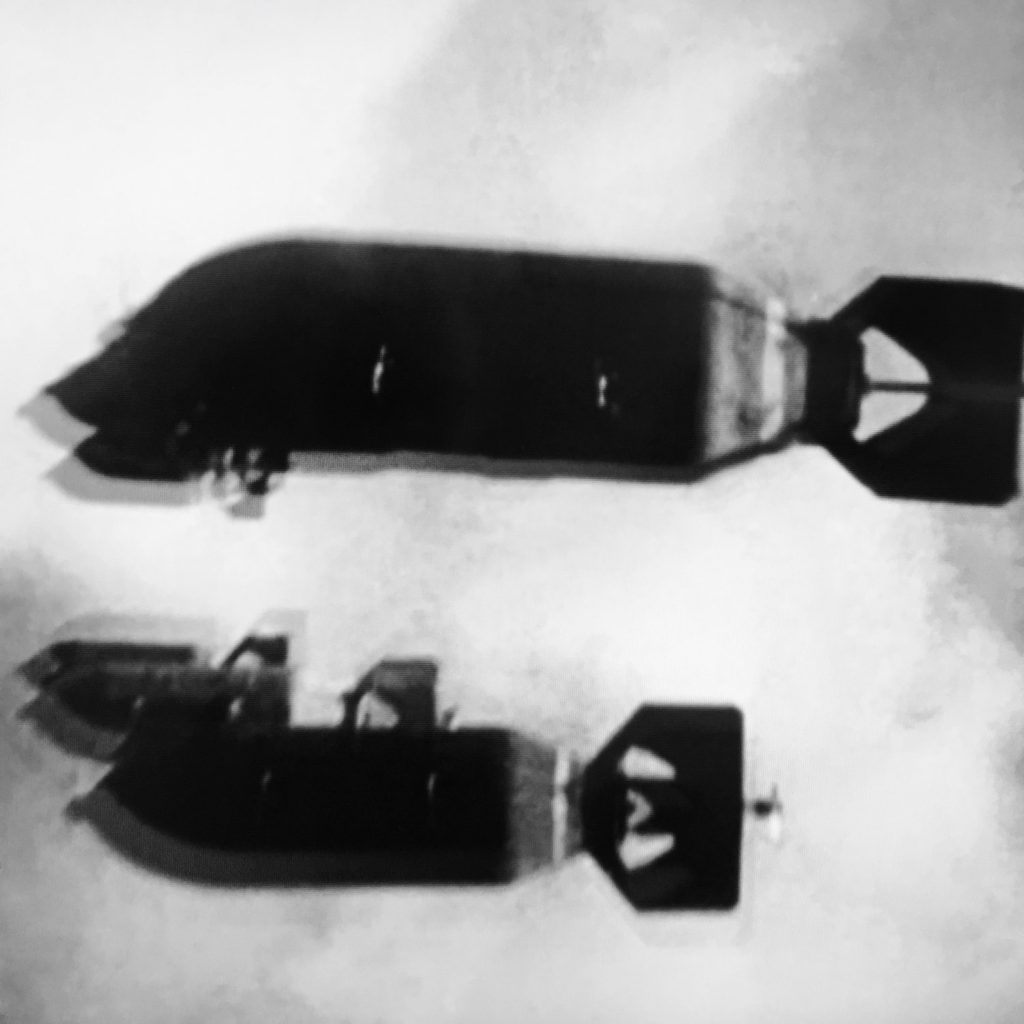I imagine those lines in your images as an installation, as actual layers on the land below, an added dimension. Altering a site of trauma, a site with nothing left to see, by adding context wouldn’t be otherwise visible. Laying down lines and arrows on the ground, shading areas and blurring others, a dark Christo.
As I’m immersed in the Second World War, your satellite view reminds me of a similar view, from the planes of the bomb squads themselves, looking through their precious Norden bombsights as they fly over cities from an unassailable position and drop death below. During the war, both Arthur Harris and Curtis LeMay staunchly defended and executed the new tactic of bombing civilian populations. They believed that this would shorten the war, if only for a day. Victory is near. How hollow it was.
In effect, they set morality aside in a time that needed it most. History judged the countless bombing victories a devastating senseless slaughter of hundreds of thousands of innocent civilians, destroying millions of homes, and rarely harming any military-industrial complex. The terms “precision bombing,” “collateral damage” and “necessary evil” all were invented. And so was napalm.
All the while, entire populations reckon with a new reality: death from above. Running frantically in the destroyed cities of Europe, ghosts in their destroyed homes , incessantly looking for shelter, safety and surviving relatives. Having no home and not being able to flee. Four hundred million cubic metres of rubble.
And from above, dismissive statements such as “there are no innocent civilians.” Cold calculations of how many civilians lives are worth a certain strategic advantage. The arrogance of Truman at Potsdam, already having decided to show his power over Japan, just a few days later.
/// #image_by_image is an ongoing conversation between photographers Ivan Sigal and Anton Kusters. @ivansigal @antonkusters on Instagram ///
